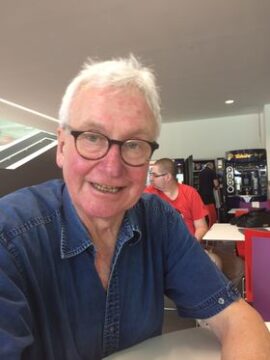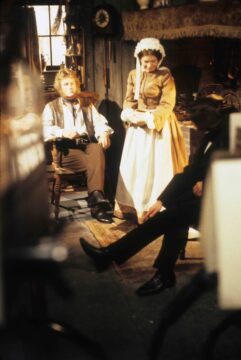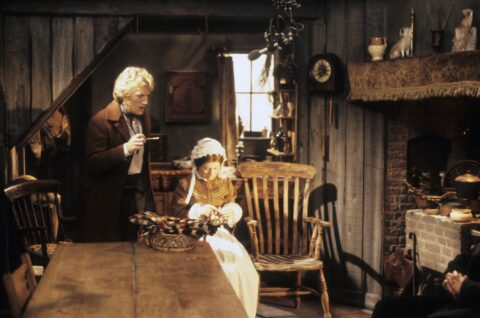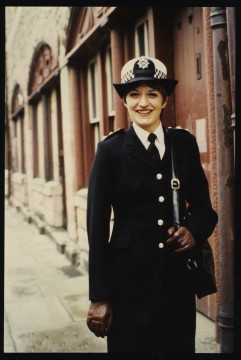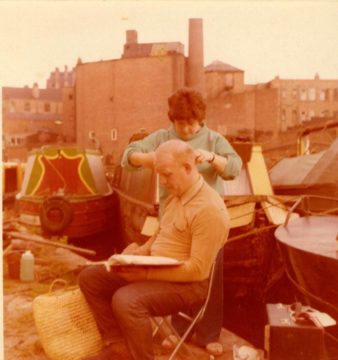
Gwen Arthy smartening Brian Glover up on ‘Shakespeare or Bust’. Photo by Graham Pettifer, no reproduction without permission
This obituary for Gwen Arthy, by Carol Churchill was published in The Guardian 15 July 2021. Here is the link to the article: https://www.theguardian.com/media/2021/jul/15/gwen-arthy-obituary?fbclid=IwAR0ps6b0vYMCqicmXcM5XFsZH3wQwyUkMuUr6SkrKtv2T7rErr68WLWmWfc
My former boss, Gwen Arthy, who has died aged 94, was head of makeup at BBC Pebble Mill from 1971 until 1985.
Gwen was born in Rochford, Essex, where her father was a baker.
She studied at the Central School of Art and Design in London, later to become Central St Martins. Her first employment was with a troupe of puppeteers, among whom was a young Ronnie Barker. She then moved to the costume-makers Angels, suppliers to film, theatre and TV, where one of her first tasks was to sculpt a nose for the baritone Tito Gobbi to wear in Tosca.
Gwen joined the BBC in London in 1964 to train as a makeup artist, before moving to the BBC studios at Gosta Green in Birmingham and then to the brand new Pebble Mill in 1971, where she became head of makeup. Programmes for which she designed makeup included Shakespeare or Bust (1970), The Brothers (1972), Nuts in May (1976) and Great Expectations (1981). When we worked on Who Pays the Ferryman? (1977), Gwen and I, as her assistant, were required to go to Crete for three months, where we shared many laughs, evenings in tavernas and midnight swims. As a result we became good friends
In 1985 she took early retirement and returned to her roots in Essex, settling in Leigh-on-Sea, where she found a lively artistic community in which she soon became involved. Over the years she became a prolific painter, in many different styles, and as well as having her own show her work was hung in many exhibitions, including the summer exhibition at the Royal Academy.
When ill health made her housebound she missed her art classes and her ability to put paint on canvas more than anything. Her interest in colour, form and texture was an integral part of her life. While she had still been able, she had travelled to many places to paint, in the UK and abroad, but her favourite, to which she returned many times, was the Isles of Scilly.
Gwen’s son, Tim, was given up for adoption in the early 1960s, but happily, in 2005, they were reunited and Gwen got to know her granddaughter, Amber.
While Gwen could be a demanding boss, she was very supportive of her staff and loved spending convivial evenings, and occasional lunchtimes, with them in the BBC Club, doing their best to empty the bar of its stock of Gordon’s gin. Gwen loved her home and garden and always had a cat, the last of whom was called Biscuit.
Carol Churchill
